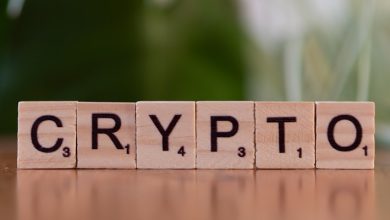What is a Fake NFT? How to Avoid Scams in the NFT Space

- Understanding the concept of fake NFTs
- Common scams to watch out for in the NFT space
- Tips for verifying the authenticity of an NFT
- Red flags to look for when buying NFTs
- Case studies of past NFT scams and how to avoid them
- Protecting yourself from counterfeit NFTs
Understanding the concept of fake NFTs
Understanding the concept of fake NFTs is crucial in navigating the NFT space safely and securely. Fake NFTs are non-fungible tokens that are not authentic or legitimate. These can be created by scammers who aim to deceive buyers into purchasing counterfeit or misrepresented digital assets. It is essential for collectors and investors to be aware of the existence of fake NFTs and to take necessary precautions to avoid falling victim to scams.
Common scams to watch out for in the NFT space
When navigating the NFT space, it is crucial to be aware of common scams that could potentially lead to the purchase of a fake NFT. By staying informed and vigilant, you can protect yourself from falling victim to these deceptive practices.
One prevalent scam to watch out for is the creation of counterfeit NFTs, where fraudsters replicate existing digital artworks and sell them as authentic pieces. To avoid this scam, always verify the legitimacy of the NFT by researching the artist and checking for any inconsistencies in the artwork or metadata.
Another common scam involves phishing schemes, where scammers impersonate legitimate NFT platforms or artists to trick users into revealing their personal information or private keys. To prevent falling for this scam, never share sensitive information with unverified sources and always double-check the authenticity of the platform or individual.
Additionally, beware of pump and dump schemes, where fraudsters artificially inflate the value of a particular NFT before selling it off at a profit, leaving unsuspecting buyers with worthless assets. To avoid this scam, conduct thorough research on the market trends and pricing of NFTs before making any investments.
By educating yourself on these common scams and remaining cautious when engaging in the NFT space, you can safeguard your assets and ensure a positive experience in the world of digital collectibles.
Tips for verifying the authenticity of an NFT
When it comes to verifying the authenticity of an NFT, there are several tips to keep in mind to avoid falling victim to scams in the NFT space. Here are some key steps you can take to ensure that the NFT you are considering purchasing is genuine:
- Check the creator’s reputation: Before buying an NFT, research the creator to verify their identity and reputation within the NFT community.
- Verify the NFT’s metadata: Look at the NFT’s metadata to confirm that it matches the information provided by the creator. This can include details such as the creation date, edition number, and any associated properties.
- Confirm ownership on the blockchain: Check the blockchain to verify the ownership of the NFT. Make sure that the NFT is listed in a reputable marketplace and that the transaction history is transparent.
- Use trusted platforms: Purchase NFTs from reputable platforms that have a track record of authenticating NFTs and protecting buyers from scams.
- Consult experts: If you are unsure about the authenticity of an NFT, seek advice from experts in the field who can help you determine if the NFT is legitimate.
By following these tips, you can minimize the risk of purchasing a fake NFT and ensure that you are investing in a genuine digital asset.
Red flags to look for when buying NFTs
When purchasing NFTs, it is crucial to be aware of red flags that may indicate a fake or scam. One common red flag to look out for is unrealistic promises of high returns or guarantees of investment success. If an NFT project seems too good to be true, it likely is. Additionally, be cautious of projects that lack transparency or have vague information about the team behind the NFT. It is essential to do thorough research on the project, including the team members, before making a purchase.
Another red flag to watch for is NFT projects that have a history of failed launches or scams. If a project has a negative reputation within the NFT community, it is best to steer clear of investing in their tokens. Additionally, be wary of projects that have a high number of similar NFTs being minted, as this could indicate a lack of uniqueness or value in the tokens.
Furthermore, be cautious of NFT projects that do not have a clear roadmap or plans for the future. A legitimate NFT project should have a well-defined roadmap that outlines their goals and objectives. If a project lacks transparency in this area, it may be a sign that they are not committed to the long-term success of their tokens.
In conclusion, when buying NFTs, it is essential to be vigilant and watch out for red flags that may indicate a fake or scam. By doing thorough research, avoiding projects with negative reputations, and staying cautious of unrealistic promises, you can protect yourself from falling victim to NFT scams.
Case studies of past NFT scams and how to avoid them
There have been several instances in the past where people have fallen victim to scams involving fake NFTs. These scams can take on many forms, from fake NFT marketplaces to counterfeit NFTs being sold as authentic. It is essential to be aware of these past scams to avoid falling prey to similar schemes in the future.
One case study involves a fake NFT marketplace that was created to lure unsuspecting buyers into purchasing non-existent digital assets. The scammers behind this scheme would advertise rare and valuable NFTs at incredibly low prices, enticing buyers to make a quick purchase without thoroughly researching the authenticity of the NFTs being sold.
Another common scam in the NFT space is the selling of counterfeit NFTs that are claimed to be authentic works of art from well-known artists. These fake NFTs are often created using stolen artwork or by altering existing NFTs to pass them off as original pieces. Buyers who are not knowledgeable about the artwork or the artist may be easily deceived into purchasing these fake NFTs.
To avoid falling victim to scams involving fake NFTs, it is crucial to conduct thorough research before making any purchases. Be wary of deals that seem too good to be true, as they may be a red flag for potential scams. Verify the authenticity of the NFT and the reputation of the seller before completing any transactions. By staying informed and vigilant, you can protect yourself from falling prey to fake NFT scams.
Protecting yourself from counterfeit NFTs
Protecting yourself from counterfeit NFTs is essential in the rapidly growing NFT space. One of the best ways to avoid falling victim to scams is to thoroughly research the marketplace or platform where you are considering purchasing an NFT. Make sure to verify the authenticity of the NFT and the seller before making any transactions.
Another important step in protecting yourself from fake NFTs is to only purchase from reputable sources or verified creators. Be cautious of deals that seem too good to be true, as they may be red flags for counterfeit NFTs. Additionally, consider using escrow services or platforms that offer buyer protection to ensure a secure transaction.
It is also crucial to educate yourself about the common scams and tactics used by fraudsters in the NFT space. By staying informed and vigilant, you can prevent falling prey to counterfeit NFT schemes. Remember, if something feels off or suspicious, trust your instincts and proceed with caution to avoid potential scams.



